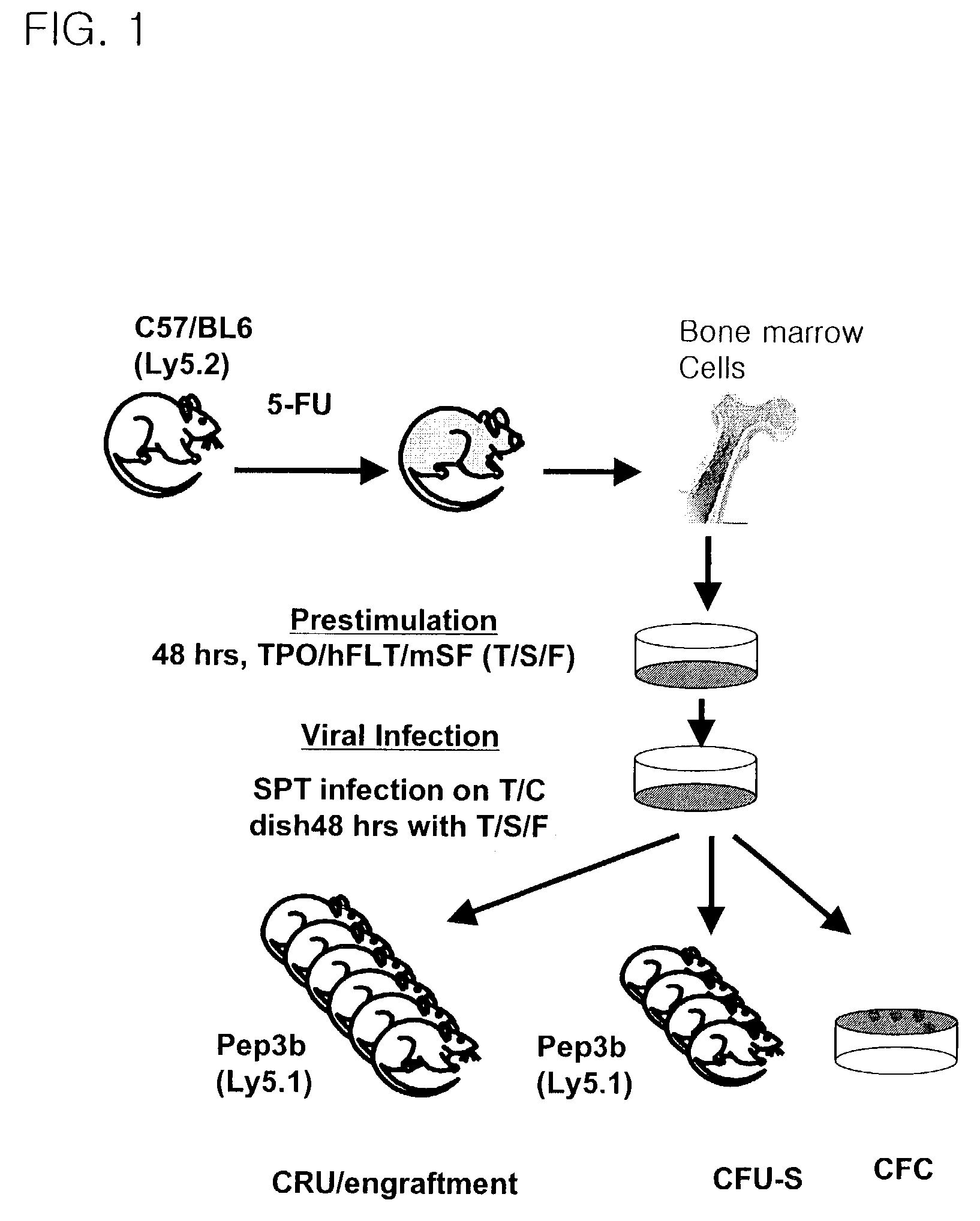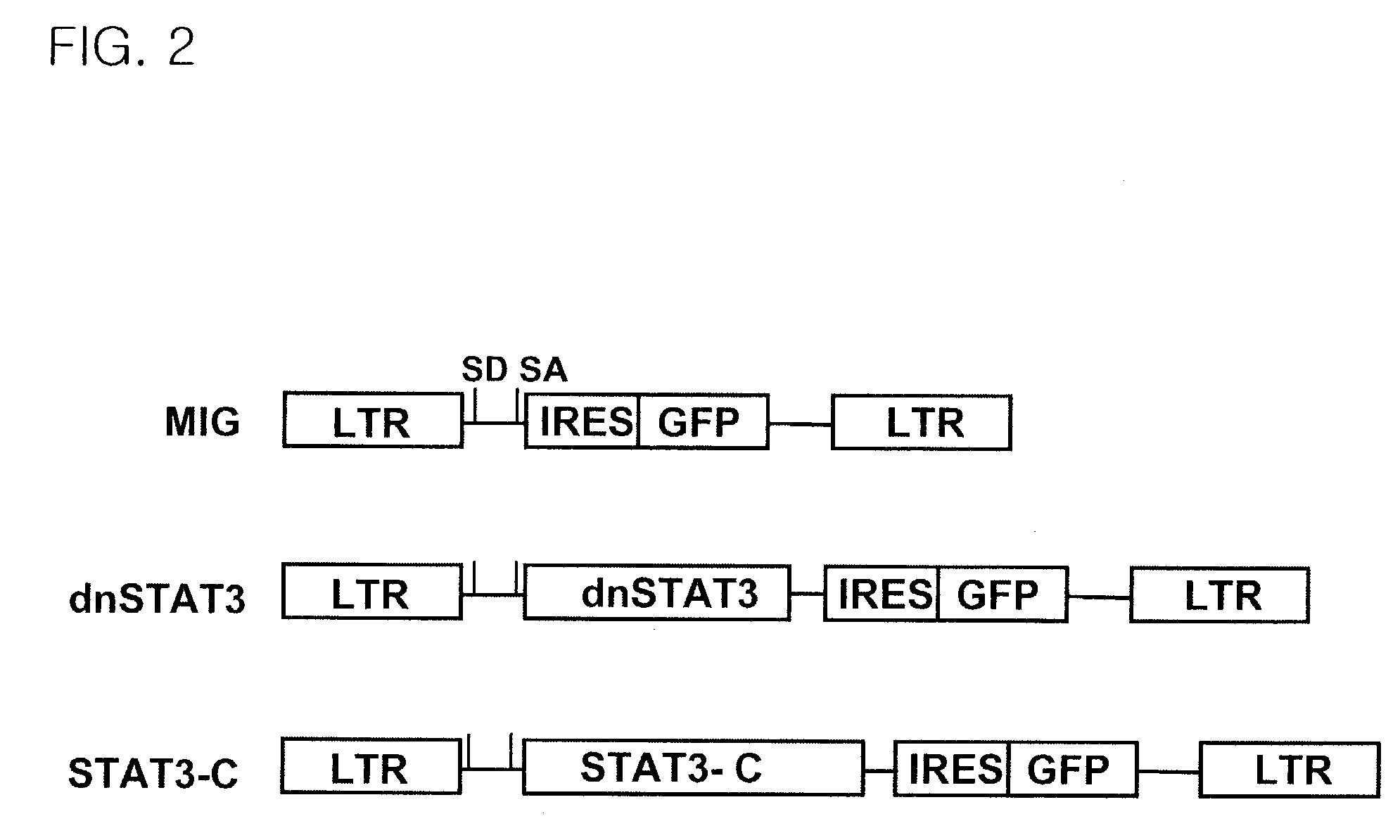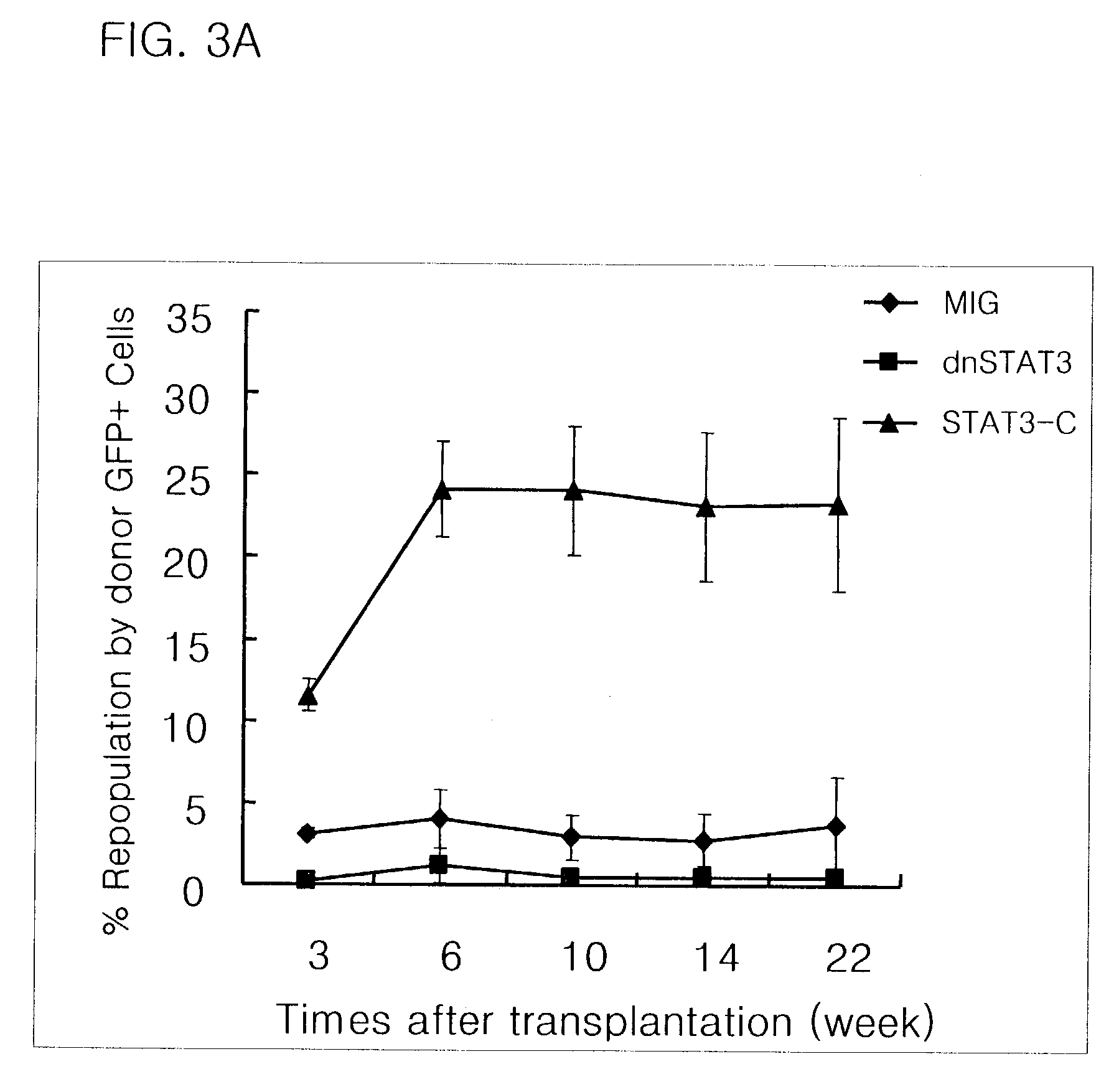STAT3 activated stem cell
a stat3-activated stem cell and activation technology, applied in the field of modified stem cells, can solve the problems of illusive stem cell mechanism, net loss of stem cell numbers after manipulation, and limited number of adult-type stem cells that can be obtained from given tissues, etc., to achieve enhanced tissue or organ regeneration, increase stat3 activity, and increase self-renewal and in-vivo/in-vitro proliferation
- Summary
- Abstract
- Description
- Claims
- Application Information
AI Technical Summary
Benefits of technology
Problems solved by technology
Method used
Image
Examples
example 1
Materials and Methods
[0123]Animals: Congeneic mice used as a bone marrow donor were 8-12 wk Peb3b / C57 / BL6 (surface marker: Ly5.1) and recipients were C57 / BL6 (surface marker: Ly5.2).
[0124]These mice were bred in the animal facility unit of Catholic University of Korea in sterile micro-isolator cages with sterilized food and water.
[0125]Cloning and Retrovirus Production
[0126]STAT3-C was constructed by site-directed mutagenesis starting from wild-type STAT3 cDNA as described previously (Bromberg et al. 1999). Dominant negative form of STAT3 was kindly provided by Dr. Allice Mui (University of British Columbia, Canada). These cDNAs were cloned into MIG vector using EcoR1 and Xho1 site in the multiple cloning site.
[0127]The retrovirus MIG (MSCV-IRES-GFP) is driven by LTR from murine stem cell virus (kindly donated by Dr. R. Hawley, American Redcross). The multiple cloning site of this vector is connected to EGFP (enhanced green fluorescent protein, Clontech, CA) with IRES (internal ribo...
example 2
Enhancement of Stem Cell Activities by Activated Form of STAT3
[0136]The effect of altering STAT3 activities in the bone marrow stem cells were tested by transplanting donor cells transduced by dominant negative STAT3 (dn-STAT3), activated STAT3 (STAT3-C) along with cells transduced by control vector (MIG).
[0137]50,000 of each input cells were transduced by above mentioned methods, and gene transfer efficiency assessed by GFP was 85-90%. These cells were transplanted into recipient mice (Pep3b, Ly5.1) and engraftment and repopulation of bone marrow was analyzed by % donor cells with GFP positive cells in the recipient's peripheral blood at various time points.
[0138]FIG. 3 shows the effect of transducing each viral constructs on their stem cell activity in bone marrow regeneration.
[0139]As shown in FIG. 3A, transduction of activated form of STAT3 (STAT3-C) results in significant increase in donor cell engraftment 5 to 10 fold above the control groups (P<0.05). The enhanced in-vivo rep...
example 3
Effect of Altering STAT3 Activity on CFU-S and CFCs
[0143]To test whether STAT3-C mediated enhancement of bone marrow repopulation also occurs during other stages of hematopoietic cell differentiation, observations were made of CFU-S at day 12, which reflects the immediate downstream stage of stem cell differentiation from multi-potent stem cells, and CFC that reflects oligo-clonal precursor cells further downstream of CFU-S.
[0144]As shown in FIG. 4, no significant changes were observed in day 12 CFU-S or CFCs, thus showing that STAT3 activity does not affect other stages of hematopoietic stem cells. Therefore, activation of STAT3 increases bone marrow repopulation by selectively up-regulating stem cell activity without affecting any of downstream progenitor cells, and the increase observed in repopulation directly reflects the enhancement of stem cell activities.
PUM
 Login to View More
Login to View More Abstract
Description
Claims
Application Information
 Login to View More
Login to View More - R&D
- Intellectual Property
- Life Sciences
- Materials
- Tech Scout
- Unparalleled Data Quality
- Higher Quality Content
- 60% Fewer Hallucinations
Browse by: Latest US Patents, China's latest patents, Technical Efficacy Thesaurus, Application Domain, Technology Topic, Popular Technical Reports.
© 2025 PatSnap. All rights reserved.Legal|Privacy policy|Modern Slavery Act Transparency Statement|Sitemap|About US| Contact US: help@patsnap.com



